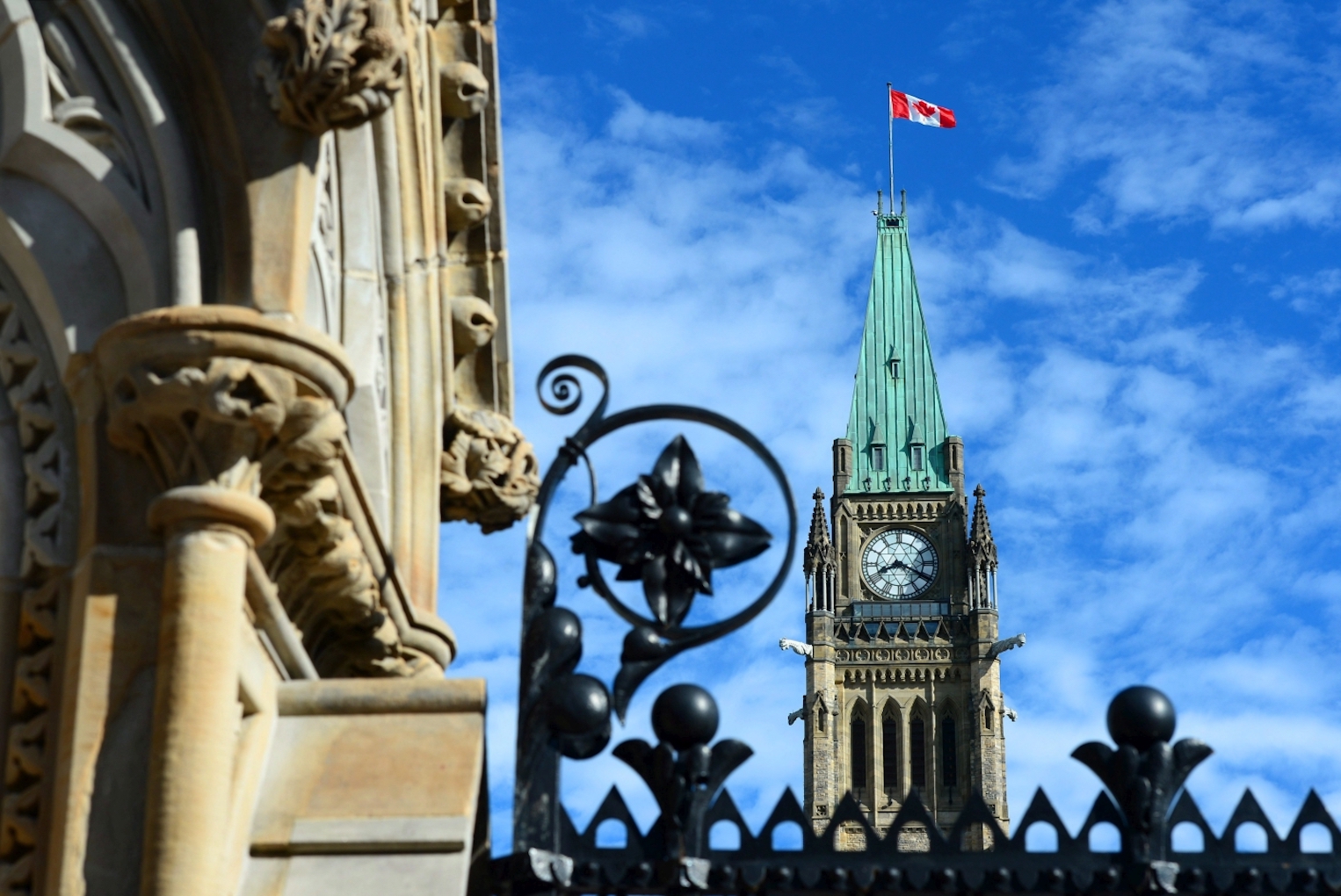Canadians elect a Liberal minority government
- With 157 seats, the Liberals are 13 short of a majority of 170, and now hold 20 fewer seats than they had at the dissolution of the last parliament.
- The Conservatives won 121, 26 seats ahead of where they stood previously.
- The big winner of the night was the Bloc Quebecois, who will bring 32 seats to Ottawa, up from 10 before the election.
- The Bloc also jumped from fourth place to third, ahead of the NDP, who lost 15 seats to stand at 24.
- Despite beginning the election campaign with high hopes of duelling with the NDP for third place, the Greens elected only one additional MP in New Brunswick.
- The Peoples’ Party of Canada failed to elect any MPs and leader Maxime Bernier lost his seat in Quebec.
- One independent MP was elected, Jody Wilson-Raybould, the former Liberal justice minister who broke with the prime minister over the SNC-Lavalin issue and resigned from cabinet earlier this year.
Voter turnout and “efficiency” of the vote
A record 17.89 million Canadians went to the polls yesterday for a turnout of 66 per cent, close to the 68 per cent who voted in 2015.
The Conservatives won the popular vote with 34.4 per cent. The Liberals will form government with 33.04 per cent, the lowest proportion of the vote for a governing party in Canadian history. Due to the vagaries of the first-past-the-post electoral system and the efficiency of their vote, the Liberals’ 33 per cent garnered them 46.45 per cent of the seats in Parliament, which is the most distorted election outcome we have ever seen.
The NDP followed with 15.91 per cent of the popular vote, the Bloc polled 7.7 per cent, the Greens, 6.5 per cent and the Peoples’ Party trailed with 1.64 per cent.
Another way to look at the numbers is to focus on the votes for the various parties yesterday in comparison to the 2015 results. Yesterday, the Bloc vote grew by 556,000 votes over 2015 and the Conservatives increased their support by 540,000 votes. Yesterday, the Liberals had 789,000 fewer votes over their 2015 result and NDP support was reduced by 623,000. These are substantial changes in voter preference.
What happens next?
With a total of 157 seats and 36 seats more than the Conservatives, the Liberals have a “strong” minority. The NDP’s 24 seats combined with the Liberals’ seats total 181, well past the majority threshold of 170. This means that the NDP’s progressive policy positions make it the logical governing partner for the Liberals. In his speech last night, Justin Trudeau gave no hints as to how he might proceed in forming a government, but NDP leader Jagmeet Singh said he expected to be speaking to the prime minister shortly.
When the two talk, they will be seeking an agreement on how to work together to ensure that the government can secure and maintain confidence in the House of Commons. The three most recent minorities—Paul Martin’s and the two of Stephen Harper—proceeded on an ad hoc, case-by-case basis, meaning that the government negotiates support from one or several other parties for its Throne Speech, budget and major pieces of legislation.
Mr. Trudeau and Mr. Singh could also agree on a more formal relationship through a written agreement in which the Liberals would adopt certain specific policies of the NDP in exchange for NDP support for the government’s Throne Speech, budget and major legislation. A recent example of such potential collaboration can be found in British Columbia’s Confidence and Supply Agreement between the B.C. NDP and Greens, which currently enables a stable, functioning minority government in B.C.
In working out an agreement, there are some obvious elements of common ground where the leaders could start. With some differences in approach, the two parties promised to reduce cellphone bills. The Liberals promised enhancements for student loans, while the NDP called for the waiving of interest on student loans. The Liberals promised tweaks to the First-Time Home Buyer Incentive and a national tax on vacant residential properties; the NDP want major investments in housing. The NDP have called for the introduction of “super wealth” tax and the Liberals could be open to that.
Forming a cabinet
A government with so little representation from Winnipeg to Vancouver necessarily raises issues of legitimacy in the minds of many Western Canadians. In addition, the resurgence of the Bloc will make Ottawa-Quebec City relations more tense than they have been for many years. The array of Conservative provincial governments across the country may feel emboldened to “charge the fences” against Ottawa as well.
It will take some days and weeks for the depth and the focus of the regional alienation tensions that were unlocked by this most unusual federal election result to become obvious. As a first order of business, Mr. Trudeau must mend fences with Doug Ford and Jason Kenney, who he pilloried during the election as surrogates for Andrew Scheer.
Mr. Trudeau will face some serious challenges in choosing a cabinet. In addition to addressing the obvious federal-provincial tensions, he must address the clear rebuke he received from voters and regions last night. Also, Liberal MPs were overwhelmingly elected from city and suburban seats, so how will the prime minister ensure rural representation in his cabinet?
The Liberals were shut out in the resource-producing provinces of Alberta and Saskatchewan, and he also lost his supremely-experienced minister, Ralph Goodale, who has been a western mainstay of Liberal governments dating back to Jean Chretien in the 1990s. The PM must therefore find some creative way of including representatives of these two provinces in his government. Appointment to the Senate is the obvious option, but that would require the prime minister to abandon the new independent appointment process his government created in its first term.
